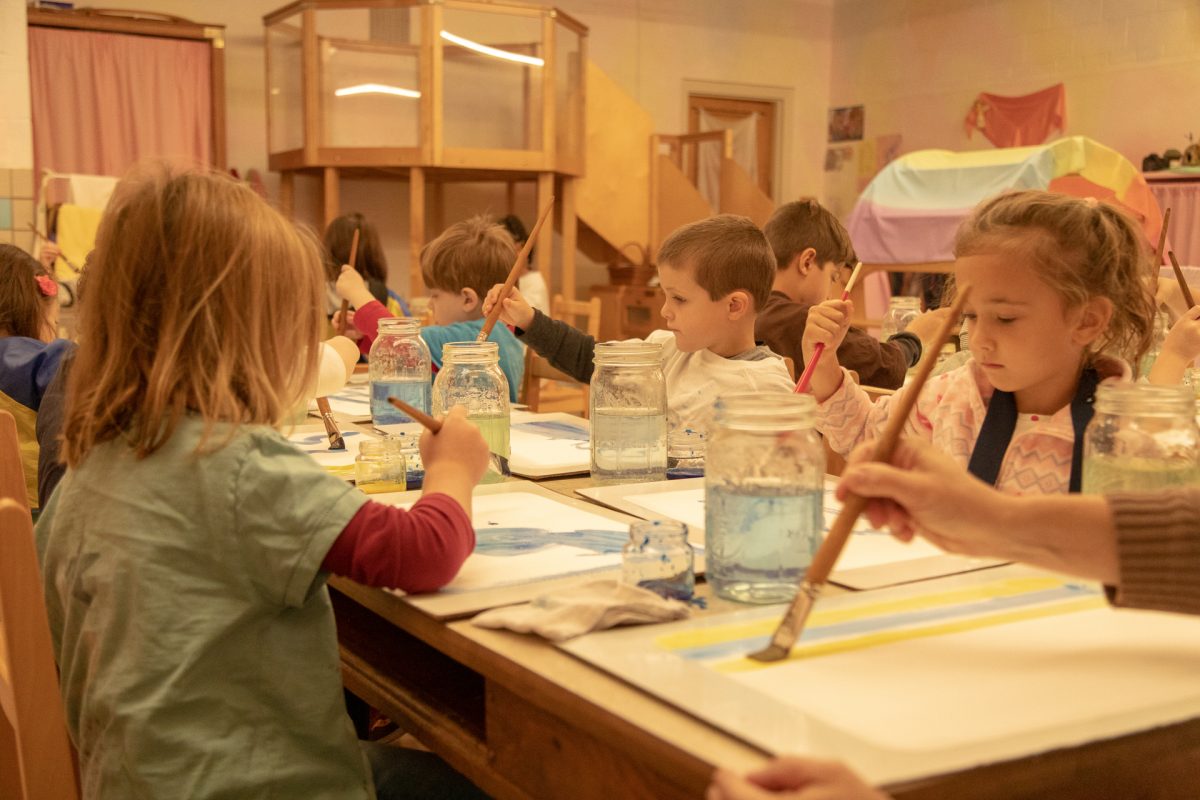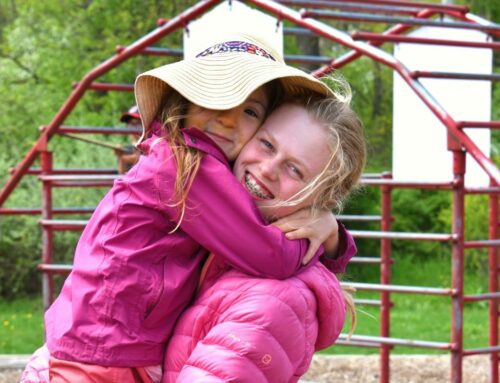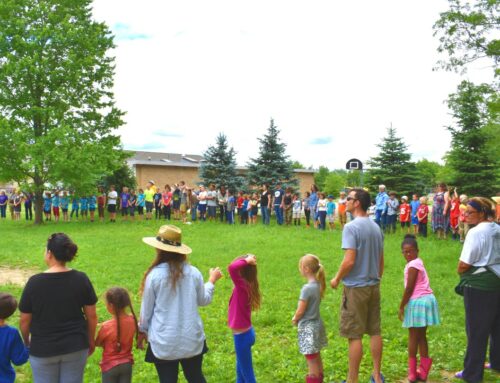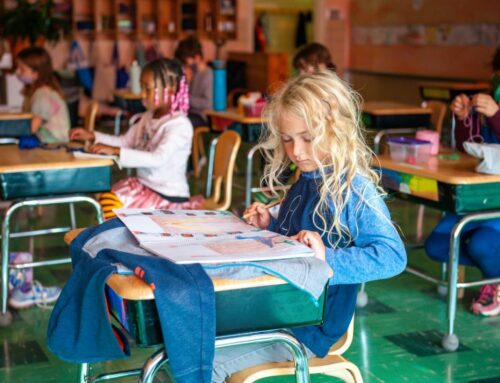As parents tour preschools and kindergartens, they are often greeted with primary colored alphabet posters, iPad stations and bright plastic furniture and toys. Waldorf Kindergarten and Preschool classrooms are very different in comparison. The colors are soft and warm, the smell of fresh food fills the air and the iPads are missing — replaced by a child made fort or wooden kitchen.
What parents are seeing is a difference in the approach to Early Childhood Education. One hallmark of the Waldorf approach is a deeply rooted intention given to child development, the classroom environment and the individual child.
Classroom Design
 Each Waldorf Early Childhood classroom has been designed with the child in mind, to help them transition from life at home to life at school — all while feeling secure and nurtured.
Each Waldorf Early Childhood classroom has been designed with the child in mind, to help them transition from life at home to life at school — all while feeling secure and nurtured.
Research supports a simpler classroom design when experiencing both social and skill based learning, saying that too many posters, mobiles, charts and toys take the focus from the important activities of the day. This New York Times article, Rethinking the Colorful Kindergarten Classroom, reports on another early childhood study which came to the same conclusion. “Children spent far more time off-task in the decorated classroom than in the plain one.”
And what are the focus-worthy activities in a Waldorf Early Childhood classroom?
Play Based Learning
Young children learn best through story, imagination, movement and play. While a four year old can be trained to accomplish some academic tasks, Waldorf educators believe the time in Early Childhood is better spent developing imagination, motor skills, social-emotional skills and internal motivation. If this groundwork is properly laid in a child’s life, then later academic learning can be done in a richer and deeper way.
 Education research agrees. The Harvard Education Letter summarized findings that show pushing academic instruction to young children does not improve, and in some cases harms, math test scores and reading comprehension.
Education research agrees. The Harvard Education Letter summarized findings that show pushing academic instruction to young children does not improve, and in some cases harms, math test scores and reading comprehension.
This is why Waldorf preschool and kindergarten children spend their days playing creatively, spending time outdoors, making and eating homemade snacks, listening to stories, seeing puppet plays and engaging in artistic activities like finger knitting, painting and drawing.
These activities help students master the skills most needed later in life — solving problems, carrying tasks to completion, cooperating with peers, building memory and listening, and developing motor skills.
Love and Reverence
 Waldorf preschool and kindergarten teachers are most interested in what truly matters for our young children — inspiring a lifelong love of learning. This is done by helping children maintain their sense of awe and wonder for as long as possible.
Waldorf preschool and kindergarten teachers are most interested in what truly matters for our young children — inspiring a lifelong love of learning. This is done by helping children maintain their sense of awe and wonder for as long as possible.
How do you learn to care about the environment or delve into the depths of a biology textbook with gusto? It cannot begin by learning about the role of trees in our ecosystem or the basics of photosynthesis. It begins instead by sitting outside on a windy day and watching the leaves sway and tumble down.
So it is with young children. The best way to foster love of learning is to foster love of life. And that is done by guiding the child’s attention and respecting their natural reverence for the world.




